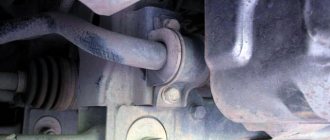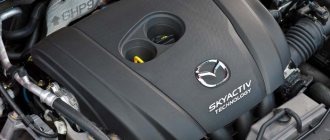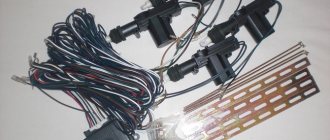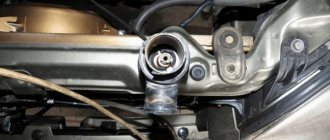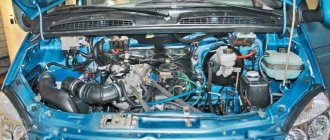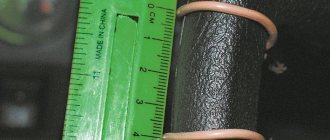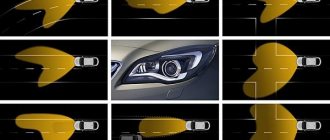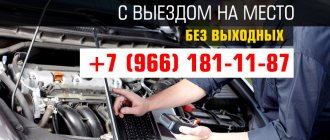Driving lessons are designed to teach a new driver how to drive a vehicle and follow traffic rules. But, unfortunately, they will not teach him all the intricacies associated with owning a car. In particular, this applies to various malfunctions, which over time will inevitably cause serious problems. During car driving lessons, the driver will not be taught to understand their causes and cope with them - he will have to comprehend this difficult science on his own. And one of its most serious aspects is considered to be a malfunction of the car's steering - along with various defects in the braking system, they top the list of the most serious troubles that can arise in the vehicle control system.
What problems can occur in the steering system?
1) wear of the transmission pair, consisting of a gear and rack
2) depressurization of the steering system mechanism
3) failure of the bearing in the steering shaft area
4) wear of the rod end joint
Joint wear tops the list of common problems that arise in the vehicle steering system. Also, close attention should be paid to problems with the hydraulic booster:
1) wear of the pump shaft bearing;
2) problems in the operation of the belt connecting the pump drive;
3) blockage in drive parts;
4) loose fastening.
5) faulty hoses
What are the causes of malfunctions that occur in the steering system? There is a whole list of them.
— Condition of the road surface
— Inadequate care of the vehicle
— Low quality of repair work and professional vehicle maintenance
— Expiration of the system’s service life.
Also, the cause of various problems in the steering system can be a different range of deviations in the performance characteristics of the wheels. This may be a decrease in pressure inside the tires, or wear of the tread or wheel bearing.
How can a driver find out that it is the steering system that is acting up? There are certain signs by which a driver can easily identify a problem with the steering, which will signal that it’s time to go to a car service center:
1) Characteristic tapping sounds in the system
2) The steering wheel rotates with difficulty
3) There is a beat in the steering wheel
4) Idle movement (so-called play) of the wheel is increased
5) Leakage of working fluid. Attention! This leak is not as noticeable as, for example, a leak in the cooling system - it is not abundant, but is determined only by a slightly fogged faulty element in the system.
What could these signs indicate? How can they let the owner of the car know what exactly is the problem? For example, tapping may indicate wear on the hinge or a loose fastening. Noise in an amplifier speaks volumes. A leak of working fluid indicates a depressurization of the system, and problems with the steering wheel indicate wear of the steering shaft parts, clogging, or problems with the drive belt.
| Tweet |
Comments:
Leave your review!
By clicking on the “Submit” button, you agree to the Privacy Policy and User Agreement
See similar articles:
What is the operation of the control system?
It is very difficult to overestimate the importance of the steering system, because it is directly responsible for steering the car, or rather for turning the wheels and changing the direction of the entire movement . Its main components are the steering gear and the steering mechanism. If we are talking about trucks, then an additional amplifier is needed to reduce shocks on the steering wheel, and then driving the car becomes not only much more comfortable, but also safer.
What about the steering mechanism? Thanks to it, the rotational movements of the steering wheel are converted into translational movements of the drive rods, and thus the drive wheels turn. Moreover, in this case, the force applied by the driver is significantly exaggerated. The steering drive also transmits force directly from the driver to the wheels and is responsible for turning them at a given angle.
Camber/toe
Changing the camber/toe settings that affect the behavior of the steering wheel can occur for the following reasons:
- road accident;
- collision of a wheel with a high obstacle;
- falling into a hole/pothole on the road at high speed.
In any of the above cases, mechanical displacement of the steering mechanism parts occurs, which leads to a tight steering wheel.
When contacting the service, you need to describe the situation, as well as changes in the operation of the steering. Adjusting the camber/toe will help in these cases.
In what cases will steering be at risk?
It goes without saying that even the most minor breakdowns of the steering system can lead to very serious consequences, which is why it is strictly prohibited to operate a vehicle with such faults. The main reasons why the steering fails may be poor-quality roads and incorrect, too intensive use of vehicles. Also, low-quality non-original fluids that are poured into the system and components will not have the most favorable effect on the condition of the system.
In addition, it is highly advisable to undergo maintenance in reliable service centers, where trusted professionals work, who will not only be able to quickly and correctly determine the type of breakdown, but also, if necessary, help with practical advice. Another negative factor that affects the operation of the steering system is deviations that occur in the operation of the car’s wheels; this can be affected by too low tire pressure, impaired balancing and wear of the wheel bearing.
| Saturday, 06/27/2020, 01:13 Welcome Guest | RSS | ||
| Home | Registration | Entrance | ||
| Car maintenance and repair Find out everything about the car |
MAINTENANCE AND CURRENT REPAIR OF STEERING CONTROLS
MAIN FAULTS IN STEERING CONTROLS
THE STEERING WHEEL PLAY EXCEEDS THE NORMATIVE ANGLE - for older car models 25°; for newer models 10-15°.
Causes:
loosening of the steering wheel on the steering shaft splines;
loosening of the steering column;
loosening of the steering gear housing;
play in cardan joints or splined joints - in vehicles with articulated composite steering shafts (ZIL, KamAZ, etc.);
play of the connecting (safe) coupling;
play in the engagement of the working pair “worm-roller”;
play in the tapered bearings of the worm;
tail rotor play;
play in the engagement of the piston-rack working pair and the gear sector of the bipod shaft;
play in the bearings or in the meshing of the bevel gears of the angular gearbox;
loosening of the bipod fastening - on the conical splines of the bipod shaft;
play in steering joints;
swing arm play - for passenger cars with independent suspension;
play in the pivot joints of the wheel axles;
play in the tapered bearings of the front wheel hubs.
The above-mentioned steering play occurs mainly due to wear of the mating parts or due to incorrect adjustment of various couplings.
STAGING OR DIFFICULTY TURNING THE STEERING WHEEL WHEN THE VEHICLE MOVES.
Causes:
overtension in the engagement of the working pair or in the tapered bearings of the worm - during adjustment;
bent steering shaft, column or steering rods;
elliptical wear of the working heads of the ball pins and steering joint liners - can lead to complete jamming of the steering;
jamming of the pendulum lever - occurs when it is bent, wear of the bushings;
increased viscosity of the oil in the steering mechanism - usually at low temperatures;
absence or hardening of lubricant in various components - in steering joints, in pivot joints;
bent kingpin;
jamming of the piston-rack pair in the crankcase cylinder in cars with hydraulic booster - occurs when the grooves become dirty and the piston drive screw jams, or when the piston pin breaks;
jamming of the spool or reaction plungers of the control valve;
a low oil level in the pump reservoir, the presence of air or water in the system - leads to strong foaming in the reservoir, the oil can completely leak out of the system;
the oil pump does not develop the required flow and sufficient pressure in the hydraulic booster system - occurs when the drive belt slips, when the bypass valve hangs or sticks (mainly due to contamination), when the safety valve malfunctions (if it is dirty, spring breaks, etc.) .
COMPLETE STEERING FAILURE.
Causes:
disconnection of the steering rods - usually occurs when the loose nuts of the ball pins of the steering rod joints are spontaneously unscrewed;
destruction of steering joints with disconnection of steering rods - with unacceptably large play in the steering joints due to wear of the pins and bearings, aggravated by the possibility of shock loads on the joints when hitting various obstacles, during an accident, etc.
jamming of the worm-roller working pair - with large play in the tapered bearings of the worm (leading to axial play of the worm and steering shaft), with strong play in the engagement of the working pair itself. When turning the steering wheel to any extreme position, the roller tooth may get on the end edge of the working part of the worm (especially when returning the steering wheel to its original position).
According to technical conditions, the steering must ensure reliable control of the car in all modes and conditions of vehicle movement in a given direction, while the driver should not expend much effort on control, however, the trouble-free operation of the steering is ensured not only by the serviceability of its elements: the technical condition of other components and parameters of the car.
Deterioration in vehicle stability can occur if the normal tire pressure, wheel camber and toe angles are violated, if the wheels are not balanced, etc.
MAINTENANCE
EO
Before leaving for the line, open the hood and perform an external inspection to check the general condition of the steering.
Pay special attention to the condition of the power steering pump drive belt, the safety coupling, the fastening of the steering gear housing, check for oil leakage from it (from under the covers, through the bipod shaft seals, from under the oil drain hole bolt, etc.). d.).
To increase the convenience of checking the cotter pin of the steering joint nuts during daily inspection, one of the cotter pin antennae is bent upward above the nut, then it is clearly visible even in a dirty state.
The tightness of the power steering system should be checked with the engine running.
At the beginning of the movement and further, it is necessary to monitor for signs of the above malfunctions.
Upon returning, the driver is obliged to inform the mechanic on duty at the garage (or KTP) about all problems in the operation of the steering system noticed while working on the line, and he, in turn, based on his own inspection and testing, as well as from the driver’s words, must make a conclusion about technical condition of the car's steering, and personally check the cotter pins of the steering joint nuts and possible play in them (visually, when the driver sharply shakes the steering wheel in both directions).
If the steering operation deviates from the standard parameters or various malfunctions are detected (including according to the driver), it is necessary to send the vehicle to the routine repair area to clarify the nature of the malfunction and, if necessary, carry out repair work.
Need to remember:
if there is a failure on the power steering line, as well as when towing a car with the engine not running, it is allowed to use the steering only for a short time - in order to avoid rapid wear or breakage of the steering mechanism parts;
Towing vehicles with power steering over long distances can only be done with the front axle raised;
The installation of non-standard (or in-house produced) parts and assemblies in steering mechanisms is strictly prohibited.
TO-1
Carry out inspection and fastening work.
Check:
Are the rods and the pendulum arm (for passenger cars) deformed?
are there any cracks or oil leaks from the steering mechanism;
condition of steering rod joint seals; damaged seals must be replaced);
cotter pins of the ball pin nuts used to fasten adjacent rods (replace heavily corroded and deformed cotter pins.
All fastening work must be done on all threaded connections, with a force corresponding to the specifications (you should try to tighten the castle nuts of the steering joints with a wrench without unscrewing them - if they move out of place, then they should be unscrewed and tightened with the appropriate force).
After fastening work, you should check the free play of the steering wheel (play) using play dynamometers K-187 or K-402. To do this, having first secured the arrow to the steering column, and the device itself to the steering wheel, turn the steering wheel to the right and left (before the left wheel begins to turn), while measuring the angle on the scale of the device. The effort to turn the steering wheel is measured similarly, using a dynamometer scale (it is advisable to do this check with the wheels hanging, which will allow a more accurate determination of the technical condition of the steering).
If the play exceeds the factory specifications and, moreover, the maximum permissible play (allowed during operation by the traffic police), it is necessary to find out the reason and carefully check the possibility of play in the above components.
Play in steering joints in passenger cars is checked by sharply rocking adjacent rods in opposite directions. The play in the pendulum lever is determined by rocking the end of the lever in the vertical plane.
For trucks and buses with rods of increased diameter, the check is carried out with the help of a partner, who sharply rotates the steering wheel to the right and left, and a second mechanic monitors possible play in all joints in turn. If, during the test, you cover the hinge being tested with your palm (taking precautions), you can additionally feel shocks and impacts in the hinge due to increased wear of the parts.
It should be remembered that operating vehicles with play in the steering joints is prohibited. Therefore, if defective hinges are detected, you should submit an application for their replacement in the TR zone. An exception is the hinges of the longitudinal steering rods (mainly trucks) - if an increased gap (play) is detected in them, you should try to eliminate it by turning (all the way, and then releasing 1/4 turn) the adjusting plugs with a special wrench, followed by a cotter pin.
Carry out lubrication work: if there are grease nipples on the steering joints, use a grease gun to fill the joints with fresh grease (until the old grease is completely removed through the gaps). CIATIM-201, Litol-24 are used as lubricants.
It is necessary to check the oil level in the steering gear housing - it should be 15-20 mm below the edge of the filler hole. During a complete replacement, draining the oil is done with the oil filler plug and one of the lower bolts securing the lower cover of the steering mechanism (which is also a kind of oil drain plug) turned out.
On vehicles with hydraulic booster, you should also check the tension of the pump drive belt. The belt deflection should not exceed 15-22 mm with a force of 40N. The belt is tensioned by tightening the oil pump housing with the pump bracket mounting bolts loosened.
TO-2
In addition to TO-1, the scope of diagnostic work for cars with hydraulic booster includes monitoring the pressure in the hydraulic system developed by the pump. For this, a simple device is used, consisting of a tee with a shut-off valve and a pressure gauge.
Large ATPs use more complex designs that make it possible to determine with greater accuracy a number of operating parameters of the hydraulic booster system - this is a portable device K-405 or a mobile stand K-465M.
During the test, a tee is installed between the pump and the high-pressure hose going to the spool. The oil temperature should be between 65-75°C. Start the engine at idle speed and, opening the valve of the device, turn the steering wheel all the way (so that the spool mechanism is completely open) in any direction, with a force of at least 100 N.
Models K-405 and K-465M include a number of additional devices, thanks to which the check can be carried out according to the following parameters: developed pressure and pump flow (with the HF engine speed controlled by an electronic tachometer); the amount of oil flowing in the amplifier; the moment of the beginning and full opening of the amplifier spool (according to the angle of rotation of the wheels); oil temperature in the system.
During TO-2, it is imperative to check the technical condition of the steering mechanism, both with a worm-roller working pair and for cars with a hydraulic booster. To do this, they usually disconnect the bipod from the steering rods and, by rocking it in both directions, determine whether there is any play in the tapered bearings of the worm (in this case, play in the steering shaft is felt) and in the engagement of the working pairs.
If backlash is detected, conventional steering mechanisms with a worm-roller working pair are removed and transferred to the unit shop for adjustments or repairs.
For cars with hydraulic booster, the adjustment of the engagement of the geared sector of the bipod shaft with the teeth of the piston-rack pair is adjusted directly on the car by tightening the previously unlocked adjusting screw with a screwdriver, the bipod shaft with the geared sector moves, and the teeth of the working pair fit tightly into each other (due to the taper of the teeth) . Over-tensioning in engagement is unacceptable.
During maintenance-2, in the course of accompanying repairs, you can replace individual faulty easily accessible parts and entire components of the steering mechanism.
If it is necessary to disconnect the steering rods by pressing the ball pins out of the conical holes of the adjacent rods, special pullers should be used. It is unacceptable to use large impact loads (sledgehammers, etc.) for these purposes.
It is not recommended to disassemble and repair steering joints at TO-2 or TR posts - this should be done in the assembly shop, maintaining a clean workplace.
TR
It consists mainly of replacing faulty components and parts.
Faulty components are delivered to the assembly shop, where they are washed, disassembled, troubleshooted and faulty, worn parts are replaced.
The worm-roller working pair is adjusted in the following sequence: first, unscrew the bolts securing the lower crankcase cover and remove from under it an adjusting shim of the appropriate thickness to eliminate play in the tapered bearings. Then, after unlocking, use a hex wrench to tighten the adjusting plug until the roller teeth engage normally with the worm teeth.
